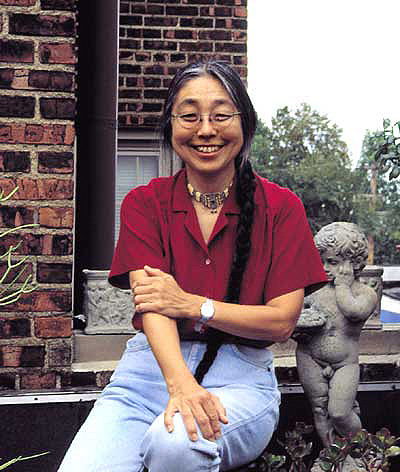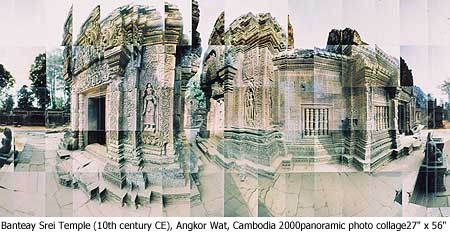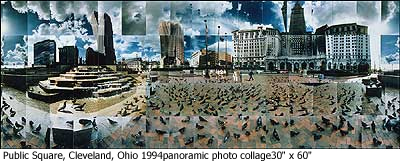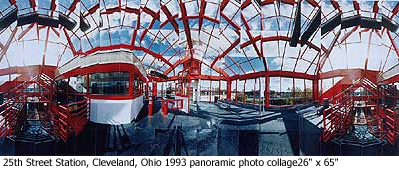Masumi Hayashi, Photographer, 1945–2006
1994 CLEVELAND ARTS PRIZE FOR VISUAL ARTS
 Masumi Hayashi’s photographic collages work
in much the same way as human memory. Fragments of information are
pieced together to form a recognizable whole. Shooting panoramic
landscapes and interiors in dozens of small adjacent increments and
then arranging the sequential fragments in grids, she collages bits and
pieces of her subjects back together as altered vistas. While the form
of the original is apparent, it has been changed by the hand of the
artist, just as memories are altered by the peculiarities of our
psyches.
Masumi Hayashi’s photographic collages work
in much the same way as human memory. Fragments of information are
pieced together to form a recognizable whole. Shooting panoramic
landscapes and interiors in dozens of small adjacent increments and
then arranging the sequential fragments in grids, she collages bits and
pieces of her subjects back together as altered vistas. While the form
of the original is apparent, it has been changed by the hand of the
artist, just as memories are altered by the peculiarities of our
psyches.
The influence of David Hockney and other artists who have used composite photography is clearly evident, but Hayashi makes the style her own by shooting many variations of each subject. This idea of the series is one of the essential tenets of her art. Her subjects have ranged from beautiful gardens to polluted U.S. Environmental Protection Agency Superfund sites, and from urban views to abandoned prisons. It typically takes several years to complete each series, and she often works on several at once. Images of people are rare in these images, which share an overriding sense of abandonment.
Sometimes the alteration of the original vista may be as simple as positioning the photographs in such a way that their edges don’t quite meet, resulting in a vague sense of unease. But it can be considerably more complex. Some of her works involve a mirroring or doubling of the image, achieved by placing two prints opposite each other in the collage. Others create a 360-degree panoramic view of the subject. Such a viewpoint is impossible for any human to achieve without turning, and is especially effective in the prison shots. It increases the sense of oppression, because there’s nowhere to hide.
The work for which Hayashi was best known at the time she received the Cleveland Art Prize focused on “American Concentration Camps,” the desolate grounds in isolated areas of Utah, Montana, Arkansas, Arizona, California, Colorado and Idaho where Japanese Americans were interned during World War II. She was born in the Gila River Relocation Camp in Arizona in 1945, not long before the end of the war. Her family was released from confinement and moved to the Watts district of Los Angeles soon after she was born, but she was in the camp long enough to absorb the sense of powerlessness felt by her mother during their displacement. That, and the artist’s determination to bring buried collective memories to the surface, made the camps the perfect subject for her.
The project involved a lot of research, and Hayashi became as much historian as artist. Because many Japanese Americans are reluctant to remember the camps, her direct connection to them was invaluable in gaining their trust. When exhibited at locations as diverse as the Cleveland Center for Contemporary Art in 1997 or the Reed Whipple Art Gallery in Las Vegas in 1998, photo collages of each of the 10 camps were accompanied by family snapshots from the era taken of each other by survivors, and by tape recordings of their recollections of life in confinement. A professor of photography in the Cleveland State University art department, Hayashi was able to take enough time off from teaching to visit all 10 camps.
With landscape and memory as her parameters, Masumi Hayashi creates dreamlike spaces from the solid foundations of the physical world.
—Frank Green
For more on the artist visit www.masumihayashi.com


